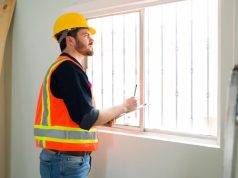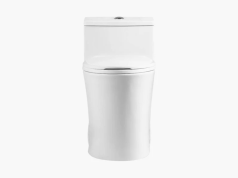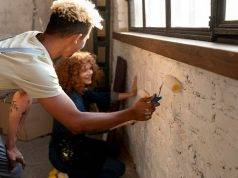A seemingly simple gate. You can not pay attention to them, easily using them every day and sometimes not thinking about the question of what gives them such ease and smoothness of movement. Here a lot depends on how the gate is mounted.
Most often, gates are welded to supports. If the canvas needs to be welded simply to metal poles, there are no particular problems here. And what if the pillars are made of a different material?
If you try to install the gate yourself, people who do not have experience in this matter may have small difficulties. But questions appear at different stages. For example, the following problem arises: how to attach the sashes to concrete, stone or other support? After all, welding is used to join iron materials to each other. And how to weld a metal structure with brick or stone?
The main stages of installation
To carry out all the work correctly, you must first carefully calculate the dimensions and mass of the sashes so that the pipes can withstand the gate. After all the calculations, the support pillars are installed. This stage is one of the most important. It depends on how reliable the gate will be. Channels or I-beams are used for support. Gates will be welded to them.
In what sequence should welding work be performed? If the hinges are chosen to be straight, then it is better to first weld the part that will be fixed on the gate itself, while it is still laid on the ground. Then they put canvases with gaps near the pillars, attach the bottom of the loops to the pillars. Then they put them on the welded lower parts of the hinges and try to open the sash on the weight.
If the sashes open well, make a couple more tacks on the hinges. After that, the gates are closed and something is placed under them so that the sashes do NOT sag during the welding of the hinges. The welding seam is laid from the bottom up. The hinges are allowed to cool, after which the sashes are opened, the stands are placed under them again and the hinges are welded from the outside again from bottom to top. After welding the loops, the seams are cleaned with a grinder.
Useful tips
If the hinges are welded incorrectly, the canvas will lead over time or they will stop opening altogether. To prevent this from happening, it is necessary:
• if the loops are chosen straight, weld them to the gate on the ground;
- before welding the hinges to the gates and pillars, it is necessary to make a lining half the length of the lower part, and attach the upper part by welding;
- while the hinges are not yet welded, it is necessary to attach a rectangular bar along the hinges and correctly expose them;
- before finally installing the gate, you need to check how it opens.
The wrought iron gates are welded to the brick pillars correctly. The pillars where the canvases are hung must have a thick pipe inside, which is installed and selected according to size. Brickwork is only a design. It is not load-bearing or fixing.
The technological operation of connecting the gate to such pillars consists of the fact that a rod or a segment of the same reinforcement is welded to the armature or pipe placed inside the masonry. These parts are called pledges. Pledges can be easily screwed or hammered into concrete or stone posts. And it’s easier than welding. It is also possible to insert collateral into the inner part of the masonry, but it must be done technologically correctly, although such an operation is very difficult. It is for this reason that this issue needs to be discussed in detail.
Most masons believe that it is better to hide the welding inside the masonry or the wall, if they are made of brick. An iron rod is welded to the reinforcing bar, which is inserted inside the pillar, so that it later protrudes from the pillar like a pin. Stonemasons call this operation: removing “collateral elements”. It doesn’t matter what this technology is called, but an inexperienced person is better off not using this method at all. Nothing good will come of this. The pins always then stick out of the wall not at all where the gate should be connected. Although, if you have experience in laying brick pillars and have a good idea of the whole process, you can try.
It is better not to put rods or fittings for welding canopies inside the masonry, but to hammer or screw them through a hole punched or drilled with a special drill. But there are also technological nuances here. It is unacceptable to drill a pillar or wall horizontally. Lashing elements, which are hammered into the masonry horizontally, hold the gate for a short time and unreliably.
It is recommended to make holes in the brick at an angle of 450 or to strive for such a corner as possible. It is necessary to start drilling holes for mortgages when the masonry is laid and dry, and it is necessary to emphasize that the drill is not in the brick, but the mortar seam. This will reduce the risk of brick splitting. After all, such a chip will later be impossible to beautifully restore. And the pin sticking out between the bricks looks much nicer. This is the best option for welding to a brick pillar of an iron gate. A detailed explanation of welding hinges on gates and pillars can be obtained from the video material.











